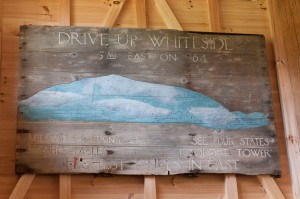Interview with Chef John Fleer – Canyon Kitchen in Cashiers, North Carolina
This is the second article in my series of interviews with Great American chefs and the fourth on special places in the Highlands-Cashiers plateau.
I had the pleasure of being able to sit down with Chef John Fleer a few weeks ago at his beautiful restaurant, Canyon Kitchen, which is located in what is called Jennings Barn at Lonesome Valley in Cashiers, North Carolina. Jennings Barn was originally intended to be a clubhouse for the development at Lonesome Valley, but the owners changed their mind and decided to invite Chef Fleer to open a restaurant in the building instead. (How fortunate for all of us who live nearby!)
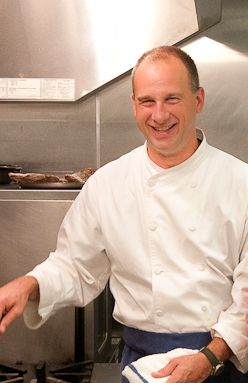
Chef Fleer has been at Canyon Kitchen since its inception last Summer. This is a seasonal restaurant and is only open from May to September. Prior to Canyon Kitchen, Fleer was the Executive Chef at Blackberry Farm (a Relais and Chateaux property) in Walland, Tennessee for 14 1/2 years. Blackberry Farm is a world-class culinary and wine destination in the Southeast. He left there in 2007 after a long and celebrated career to pursue other interests.
Chef Fleer has been nominated twice for the prestigious James Beard Award. He has been featured in many food magazines, such as Gourmet, Bon Appetit and Food and Wine. He has appeared on several television shows and received many other accolades during his career.
This year, we have already been to dinner at Canyon Kitchen a couple of times with friends. It is truly a special place and I am very excited to be able to share my interview with Chef Fleer with you (along with all the pretty pictures!).
The first topic we discussed was the difference between Blackberry Farm and Canyon Kitchen. Chef Fleer said that they have consciously made Canyon Kitchen a more relaxed setting. The food is also more relaxed. He wants dinner at Canyon Kitchen to be the highlight of someone’s day and not a high pressure situation where everyone needs to be dressed up.
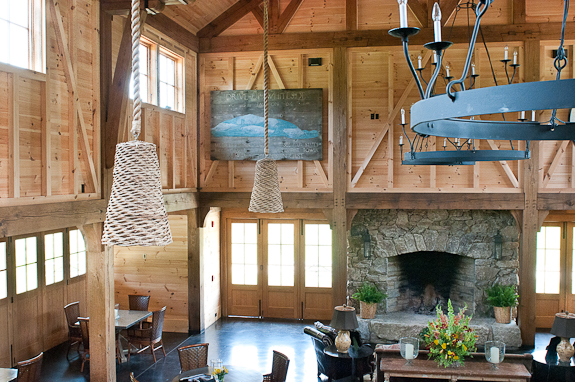
He likes the blend of styles in the mountains and the different approaches that people have when going out to eat. Some are very casual and then there are people that have to be dressed as soon as the sun sets if they are going to dinner. He loves the mix and thinks it is neat to see pearls right next to Birkenstocks.
Chef Fleer uses the term “Simple Seasonal Cuisine” to describe his style of cooking at Canyon Kitchen. He said that the label of “Foothills Cuisine” from Blackberry Farm stayed there when he left, but that this style of cooking is different. It is not as inflected with Southern staples as it was at Blackberry Farm. Although he grew up with that style of cooking and has cooked that way all of his life, he said he is much more responsive to what is available in this area as opposed to what is available over the mountain, although he says that influence will always be there. Fleer used the term “over the mountain” several times to describe going over the mountains between Tennessee and North Carolina.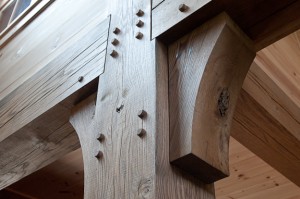
One holdover from his days at Blackberry Farm is to stop at Cruze Dairy Farm in Knoxville, Tennessee on the way to Canyon Kitchen to purchase buttermilk. He still enjoys tasting ice cream with Colleen Cruze and continues to nourish some of the great relationships that he has formed over the years. (I checked out their website and they have very happy cows!)
So, how does this chef get his inspiration and plan a menu for the season at a Canyon Kitchen? Chef Fleer explained that he has a bit of a different creative process.
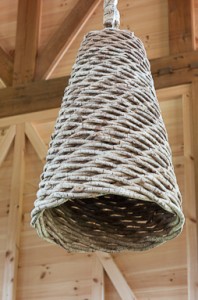
He says that he takes snapshots of things he would like to cook. He then looks at elements of a dish. These ideas then end up on a page in columns. Then he decides what looks good together and how to combine them and will draw lines bringing them together. Fleer also said some inspiration will come from conversations with other chefs, things he reads, what he sees in a market or a taste memory.
When asked about his future plans, Chef Fleer said that he and his wife are in no rush family wise to make a move. (Fleer commutes to Canyon Kitchen from Tennessee during the Summer months.) When the economy turned downward, he decided to table a restaurant idea that he was working on. Canyon Kitchen has been a great way for him to stay in the kitchen and “get over the mountain”. Both he and his wife were born and raised in Western North Carolina and would like to come back this way. He said that he will explore some real options in the coming year.
Asheville is the most likely spot for Chef Fleer to open his own restaurant eventually, but he would still plan to be involved in Canyon Kitchen since the Summer season is so short. Asheville is about an hour and a half drive from Cashiers.
I am always interested to know what chefs think about all the new focus on food and the impact of channels like Food Network in America. He said that in general he thinks that it is great and loves it. “It is the most important development in the evolution of American cooking in the last twenty years.”
When Chef Fleer began his career at Blackberry Farm in 1992, the launch of Food Network was not far behind. The channel made its debut in November of 1993 with Emeril and some of the original chefs.
Fleer said that people then started to watch the cooking shows and thought it looked like fun and either wanted to try it at home or maybe even do it for a living. He said that from a professional standpoint, it took people with no experience and exposed them to the restaurant industry and then many of them made decisions to attend culinary school. It made the restaurant industry and food interesting.
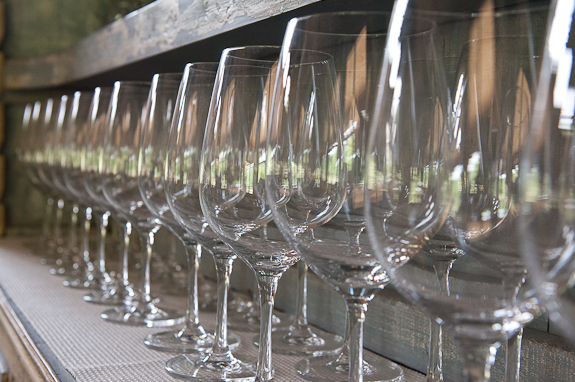
Chef Fleer said that early on in his career at Blackberry Farm the responses he would receive from an advertisement for a kitchen position were deplorable. However, three to five years later, kids from the Knoxville area were graduating from high school and going off the the Culinary Institute of America or Sullivan University with maybe having a few years of kitchen experience prior to school. They came back home and wanted to stay in the area, so suddenly he had applicants that were five times more qualified than the ones he originally had to work with. He said that all the attention on food is incredibly positive in that aspect.
The cultural explorations aspect, however, is what impresses him the most. He loves the fact that anyone can watch (especially children) a show like Anthony Bourdains’s No Reservations and see how different cultures approach food. Although something like eating bat wings (and yes, apparently people do eat them) may be weird to us, from their perspective it is totally normal.
What does Chef Fleer think about reality TV relating to food? He doesn’t like it. He said one show he did enjoy was the older version of Gordon Ramsey’s Kitchen Nightmares that was filmed in England. Some of the newer food shows are “food porn and they are nothing but eye candy with food as the hook”. He said they don’t have much substance, but then that isn’t different from much of regular television.
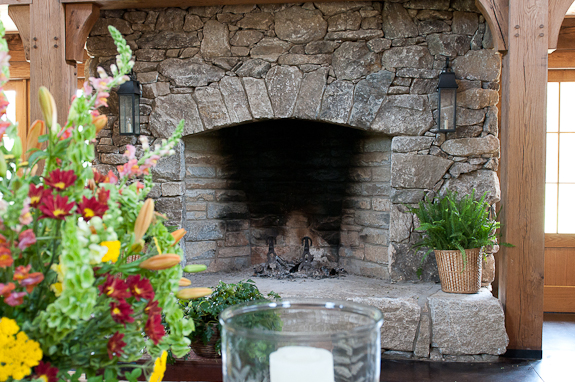
I also asked Chef Fleer how he feels about restaurant reviews being done by bloggers, since that is a bit of a hot topic right now. He sees this as a positive – that it is the democracy of thinking about food and that anyone’s opinion is equal to someone else’s. He said that he likes to read “good writing” and that a good writer has the ability to capture an experience whether it is good or bad.
What is his advice for someone interested in becoming a chef? He gets asked that question often. His number one piece of advice is to work in the business for at least a year, especially for a young person or even someone changing careers. He said that it is not glorious in the kitchen and you will not end up on the Food Network! “It is not all about beautiful, locally grown wild mushrooms in a hot saute pan.” (Of course, I can relate to the reality of that situation after having a dinner party!) He adds, to be successful, you need perseverance and luck, as you do with anything.
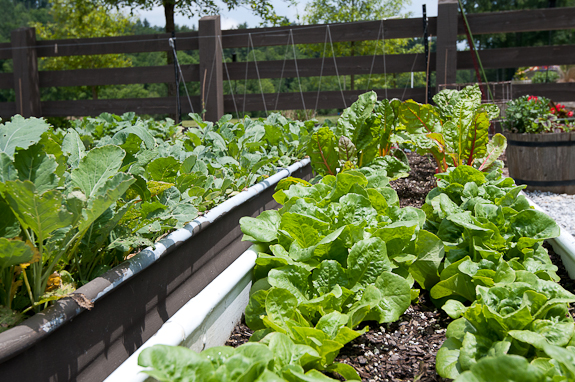
When I asked Chef Fleer what chefs he admires or finds interesting, he said the two chefs that fascinate him right now are Victor Arguinzoniz of Etxebarri, which is outside of Bilbao, Spain and Francis Mallmann from Buenos Aires. Both of these chefs use the element of fire in their cooking.
Victor Arguinzoniz has a small restaurant with a tiny kitchen in the Basque Country of Spain and is a grill master of Basque cooking. He makes his own charcoal and pieces of equipment to cook with and has a very precise grilling method. Victor has a bank of grills and feeds them new charcoal for each dish. Pots are placed on a pulley and he adjusts each piece individually. This incredibly simple method of cooking maximizes the flavors of the ingredients by applying fire to them. However, Fleer says it is not smokey like a barbecue.

Francis Mallmann, author of the book, Seven Fires, uses the seven traditional fire methods based on cooking techniques that originated in South America. One of these is “little hell”, where the charcoal is placed on a platform on the bottom, similar to a Chinese barbecue box. Another technique is to string whole meat up over the fire. Food is also buried in ashes.
Both of these chef’s cooking methods are about the food and the fire and the seasoning is minimal. Chef Fleer says that it pulls back on the creativity and focuses on the ingredients and the heat and he is fascinated with this. Will we be seeing this at Canyon Kitchen in the future? Fleer says he “sees it in his mind all the time”, but certainly would like to do one small project incorporating this method of cooking on the menu.
When asked about how the chefs in the South are recognized in comparison to other parts of the country, Fleer said that Southern chefs are beginning to get their due and they certainly have deserved it for a long time. He was very happy to see two of his good friends (Linton Hopkins and John Currence) included in the event at the White House several weeks ago, which was part of the anti-obesity campaign in our schools that Michelle Obama is working on.
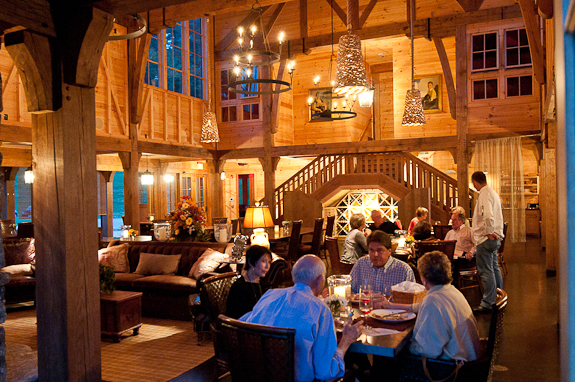
While we were finishing up our discussion, I told Chef Fleer about the series of posts I have been working on for the Highlands-Cashiers plateau and mentioned The Lick Log Mill Store and how we had driven past this wonderful little store for ten years and never stopped in. (I have spoken to so many people who have read that article and say that it made them want to go and visit the Lick Log Mill Store and many of them already have.)
Fleer said that this is the great thing about the blogging world. “There are so many eyes and ears focused elsewhere.” He hopes that by reading about those real “finds” it will lead to preserving these little places and that it may be “an anecdote to corporate mentality and takeover of our experience”.
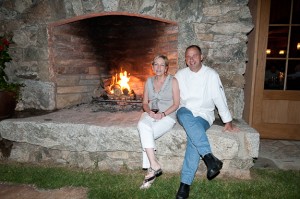
I hope that you will get a chance to come to this part of the country and that you will make plans to dine at Canyon Kitchen when you do. Chef Fleer’s cuisine truly is exceptional (and he is an awfully nice guy, too!). This restaurant is one of the highlights here in the mountains. There is nothing better than spending a Summer evening dining in the Jennings Barn at Canyon Kitchen with all the doors open surrounded by views of the box canyon. There is a certain glow that radiates from this restaurant when the sun sets in the evenings and the lights are turned down low. It is a very special place.
Chef Fleer shared his fabulous recipe for Buttermilk Panna Cotta with Strawberry-Champagne Soup with me so that I could share it with you. I just prepared it over the holiday weekend for friends and it truly was one of the best desserts I have ever had!
Enjoy!
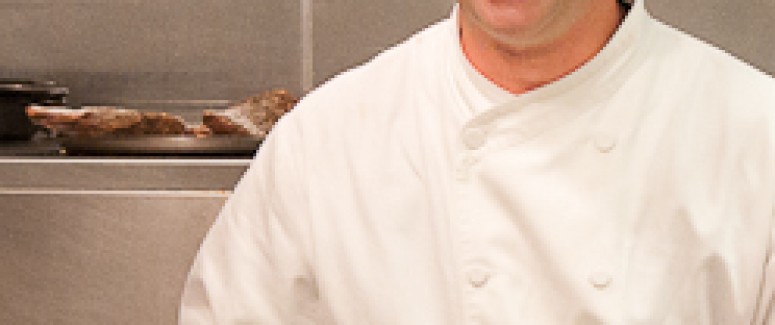
Buttermilk Panna Cotta with Strawberry-Champagne Soup
Courtesy of Chef John Fleer
Serves 12
Ingredients:
Buttermilk Panna Cotta
1 tablespoon (1/4 ounce package) unflavored, granulated gelatin
1/4 cup water
1 1/2 cups half-and-half
3/4 cup sugar
2 each vanilla beans, split, scraped
2 1/4 cups buttermilk (room temperature)
Strawberry-Champagne Soup
(Yield: 1 1/2 quarts; Serves 12 4-ounce portions)
2 pints strawberries, washed, cleaned of stems, and halved
4 ounces water
8 ounces orange juice
1/2 cup sugar
1 cinnamon stick
1/4 teaspoon kosher salt
8 green peppercorns
2 tablespoons honey
1 tablespoon lemon juice
10 ounces Champagne
1 pint strawberries, stems removed, washed, diced brunoise
Directions:
For Panna Cotta:
Bring half-and-half, sugar, and vanilla beans and scrapings to a simmer in a medium heavy-bottomed saucepot. Turn off heat and set aside.
Sprinkle gelatin over room temperature water. Bloom gelatin in water for five minutes. Warm the gelatin over water bath until gelatin is fully dissolved.
Whisk in dissolved gelatin and buttermilk and stir until fully combined.
Strain the mixture through a fine-meshed strainer.
Cool panna cotta mixture over ice, but do not let it set.
Ladle mixture into small ramekins or dishes.
Chill panna cottas for one hour in the refrigerator.
For Strawberry-Champagne Soup:
Bring water, orange juice, sugar, cinnamon stick, salt, honey and green peppercorns to a simmer. Let stand for one hour. Strain mixture through a fine-meshed strainer and pour over the strawberries . Put the strawberries in a blender. Puree until mixture is smooth. Stir in the lemon juice and champagne. Serve chilled.
Assembly:
To remove panna cottas from their dish: dip the bottom of the dish into warm water briefly and turn out onto your dessert bowl or plate. Serve cold.
Pour 4 ounces of the soup slowly to one side of the panna cotta.
Tilt the bowl to allow the soup to move to all areas surrounding the panna cotta.
Garnish with brunoise of fresh strawberries.
